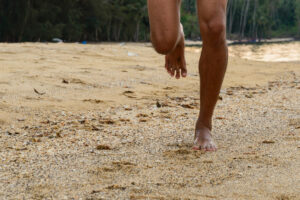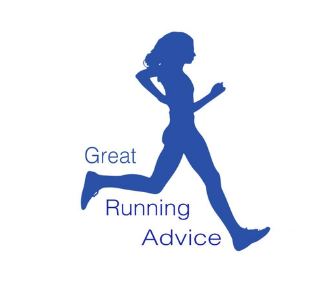How a runner runs, varies from one runner to another. Some runners like to run barefoot, some like minimalist shoes, and now many are wearing carbon fiber-plated runners. I will explain each type of runner, and then I will discuss the question does barefoot running help overpronation?
Barefoot Runner
This type of runner is exactly as it says. When running, they run barefoot without any shoes or socks. Depending on where they are running, this can be extremely hard, depending on the surface. When we start running barefoot, it takes a while for the legs to get used to it due to the soft tissue on the soles of our feet.
Minimalist Shoes
Minimalist running shoes are loosely defined as shoes that, more closely mimic the way we naturally run when barefoot while still providing some protection from hazards on the ground. They’re characterized by minimal amounts of cushioning in the midsoles and, in particular, by a lack of beefy heel cushioning.Traditional running shoes often feature a “heel-to-toe drop” of 10-12 millimeters (meaning they have an extra 10-12 millimeters cushioning underneath the heels relative to the toes). By contrast, minimalist shoes usually have less than an 8-millimeter drop. They might also have no drop at all (“zero-drop” or “balanced cushion” shoes), meaning your heel and forefoot are at the same level as they are when you’re barefoot.
Carbon Fiber Plated Shoes
Carbon-plated running shoes have taken the running world by storm with their innovative lightweight technology that allows runners to enjoy a well-cushioned midsole without compromising on weight or support over long distances. This happens by inserting a thin carbon fiber plate into the midsole, which adds stiffness to the shoe and causes the foam to compress and expand more quickly, saving you energy.
They are lightweight, help to run long distances, and can make you run faster.
Does Barefoot Running Help Overpronation
Overpronation means that your foot rolls inward as you move. If you overpronate, the outer edge of your heel
Barefoot running helps overpronation as follows.
- Natural Running Form
- Stops Overstriding
- Promotes Forefoot Or Midfoot Strike
- Strengthen Muscles In The Foot
Natural Running Form
Barefoot Running uses proper biomechanics. It changes the way that we use all muscles in the lower leg. When running barefoot, your body runs the way we were born to run, and gradually your form will improve.
Stop Overstriding
Barefoot running helps stop us from overstriding. Overstriding is when we land our feet too far in front of us when we run. When running barefoot, if we land our foot too far in front of us, it is actually painful, as you are adding workload to all your joints. When we wear shoes, we don’t notice this as the cushioning on the runners takes the impact rather than your joints. As this overstriding is painful, we will stop overstriding to prevent this pain.
Promotes Forefoot or Midfoot Strike
As we are running barefoot, we are more inclined to land on the ball of our foot as this is more natural. When running in cushioned shoes, we are inclined to land on our heel, called a heel strike. The logic behind forefoot or midfoot strike for barefoot runners is that running barefoot would be too painful to land on our heel. As barefoot running is the most natural form of running, it is logical that we will run in a way that causes the least pain.
Strengthen Muscles Of The Foot
Barefoot Running helps strengthen the muscles of the foot. When these muscles are strengthened, they should automatically help lift the foot’s arch. When we are running in supported shoes, they are doing nothing to help strengthen the arch.
Final Thoughts
Now that we have looked at how barefoot running helps overpronate, I hope you understand how this happens. I have also explained different types of running shoes vs. barefoot running.
